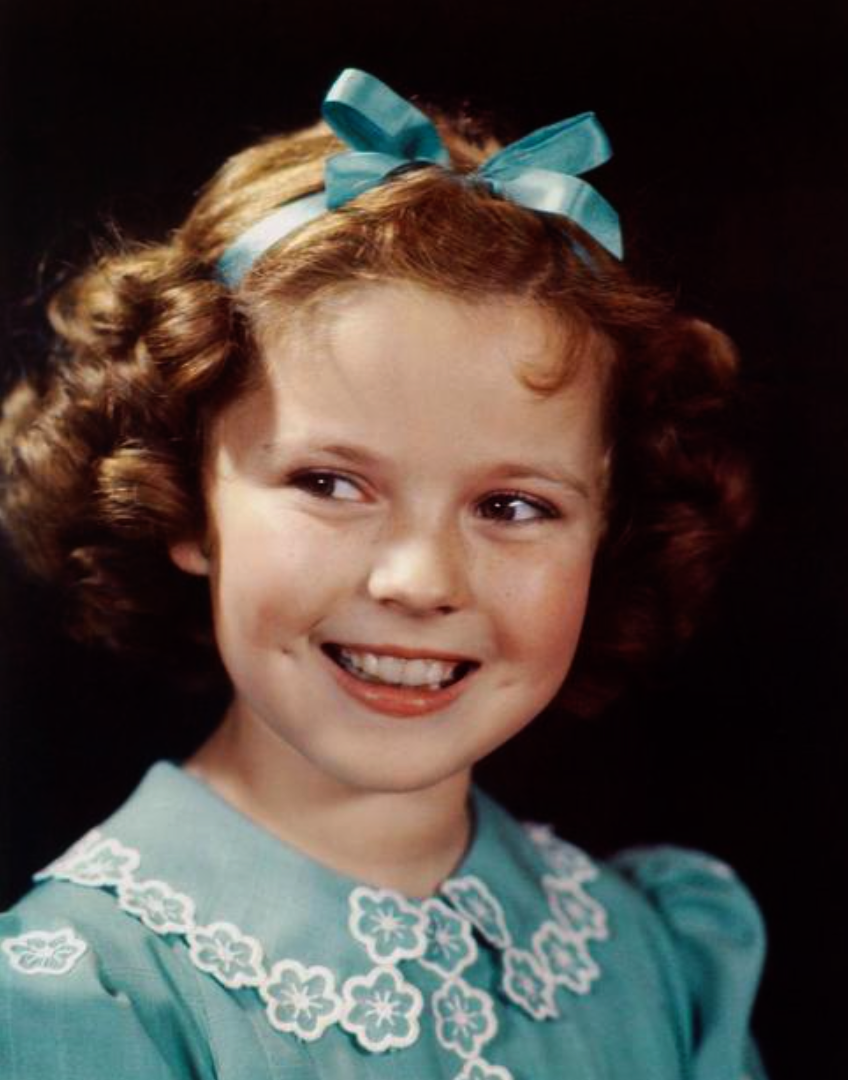Shirley Temple was an American actress, singer, and dancer who became a beloved child star during the 1930s. Born on April 23, 1928, in Santa Monica, California, Shirley was the youngest of three children and began her career in entertainment at a very young age. When she was just 3 years old, she won a talent contest at a local dance school. Her mother, Gertrude Temple, was a homemaker, and her father, George Temple, was a bank employee, and they recognized her natural ability and enrolled her in various dance classes. She soon caught the eye of Hollywood talent scouts and landed her first film role at the age of 4.
In 1934, Shirley starred in her breakout film, “Bright Eyes,” in which she played an orphan named Rebecca. She quickly became a Hollywood sensation, with her cherubic face, curly hair, and infectious smile. Shirley’s natural talent and charm made her one of the most beloved child stars of all time.
Over the next few years, Shirley starred in a string of successful films, including “Curly Top,” “Heidi” and “The Little Princess.” In many of her movies, she played an optimistic and spunky character who faced various challenges but always emerged triumphant.
Shirley’s success on the big screen earned her numerous accolades, including a special Academy Award in 1935 for her “outstanding contribution to screen entertainment.” She also became a cultural icon, with her image appearing on everything from dolls to cereal boxes.
Despite her popularity, Shirley faced her fair share of challenges. Her parents managed her career with an iron fist, controlling every aspect of her life. They were known for their strict discipline and tough negotiations with film studios. In her autobiography, Shirley described her childhood as “a full-time job with no benefits.”

Shirley Temple (1938), (Universal History Archive/Universal Images Group via Getty Images)
Shirley’s parents struggled to manage her finances, and she was left with very little of her earnings from her film career. She was ultimately able to regain control of her money in the 1950s, but her experience as a child star left her with a deep distrust of the entertainment industry.
As Shirley grew older, she found it difficult to transition from child star to adult actress. She appeared in a few films as a teenager, including “The Bachelor and the Bobby-Soxer” and “Fort Apache,” but her popularity waned as she entered adulthood. In 1950, she announced her retirement from acting at the age of 22.
After leaving the entertainment industry, Shirley pursued a new career in politics. She served as a United States Ambassador to Ghana from 1974 to 1976 and as the United States Ambassador to Czechoslovakia from 1989 to 1992. She also served as Chief of Protocol for the United States from 1976 to 1977.
In addition to her work in politics, Shirley was a devoted wife and mother. She married her first husband, John Agar, in 1945, and they had a daughter together named Linda Agar. The couple divorced in 1950, and Shirley later married Charles Black in 1950. They remained married until Charles’ death in 2005, and had two children together, a son also named Charles Black and a daughter named Lori Black.
 ‘
‘
Shirley’s impact on Hollywood and American culture is immeasurable. Her talent and charm captured the hearts of millions, and her legacy as a child star endures to this day. She is remembered as the little girl with curly hair and a bright smile, who brought joy and delight to so many. Among one instance seared into the public’s memory is her unforgettable performance of “Animal Crackers In My Soup.”
“Animal Crackers in My Soup” is a classic song Shirley performed and was featured in her film “Curly Top” released in 1935. In the movie, Temple performed the song in a restaurant while entertaining her fellow diners, and it became one of her most iconic performances.
The video clip of “Animal Crackers in My Soup” opened with Temple’s character sitting at a table with a group of children in a room filled with more tables with other groups of children. Surrounding them were also a few adults. Shirley wore a pretty dress, had her hair styled in ringlets and exuded a sense of infectious energy and charm. As one of the women began to tickle the keys of a piano behind her, Temple began to sing, her sweet voice filling the room.
The song is about a little girl who loves to eat animal crackers in her soup, and the lyrics are playful and imaginative. As Temple sang, she used her fingers to mime putting the animal crackers in her soup and then pretended to fish them out with a spoon. The adults around her watched in amusement, with some clapping along to the beat.
Temple’s performance is not just about singing; she also incorporated some simple choreography. She tapped her feet, clapped her hands and waved her arms in time with the music. The entire scene is a joyful and lighthearted performance that captures the essence of Temple’s appeal.
“Animal Crackers in My Soup” showcases Shirley’s unique talent and charm. Her adorable presence, captivating voice, and simple yet effective choreography created a memorable and enduring performance. It is no surprise that the song and the video clip remain beloved by fans of all ages.



